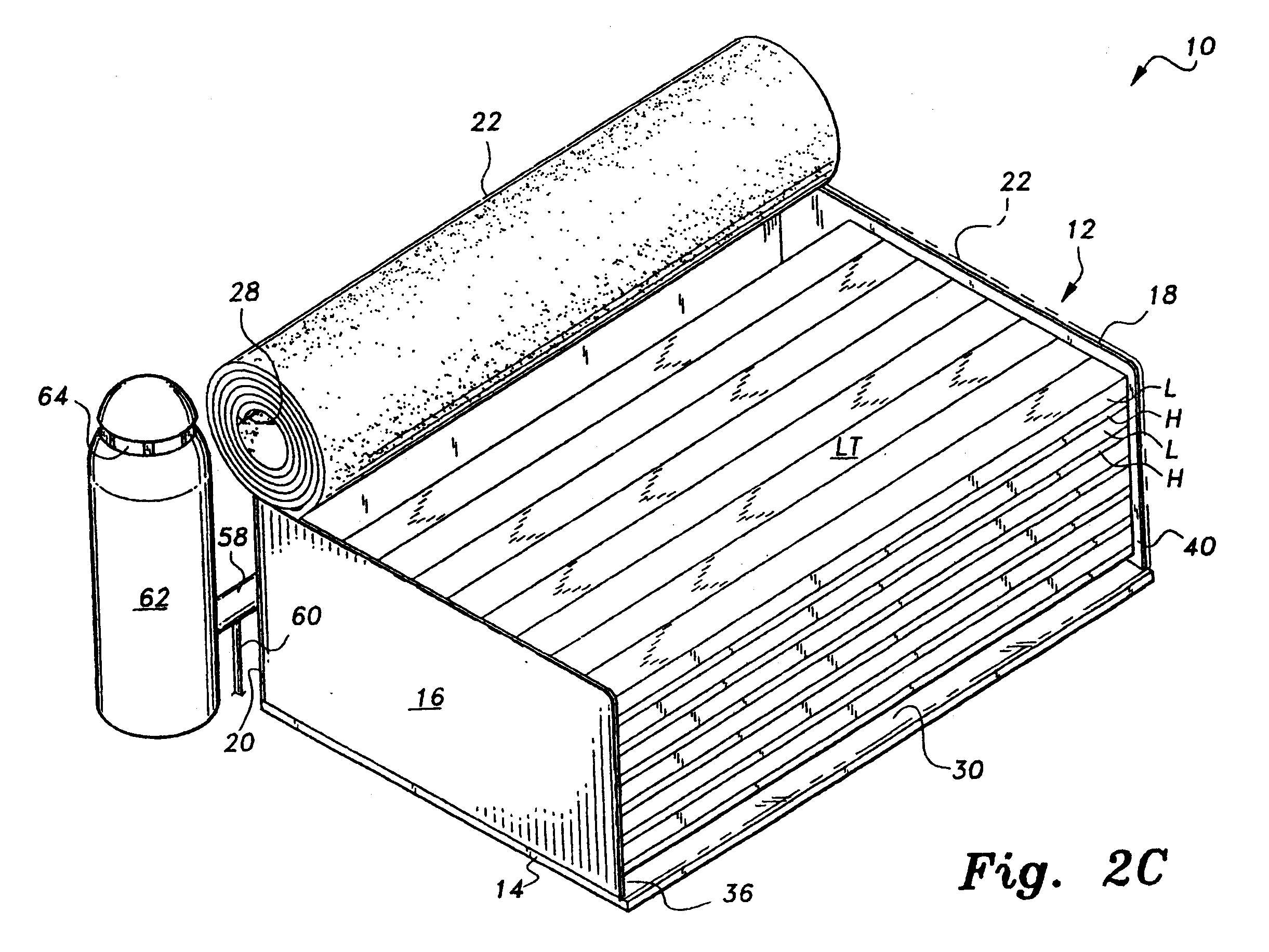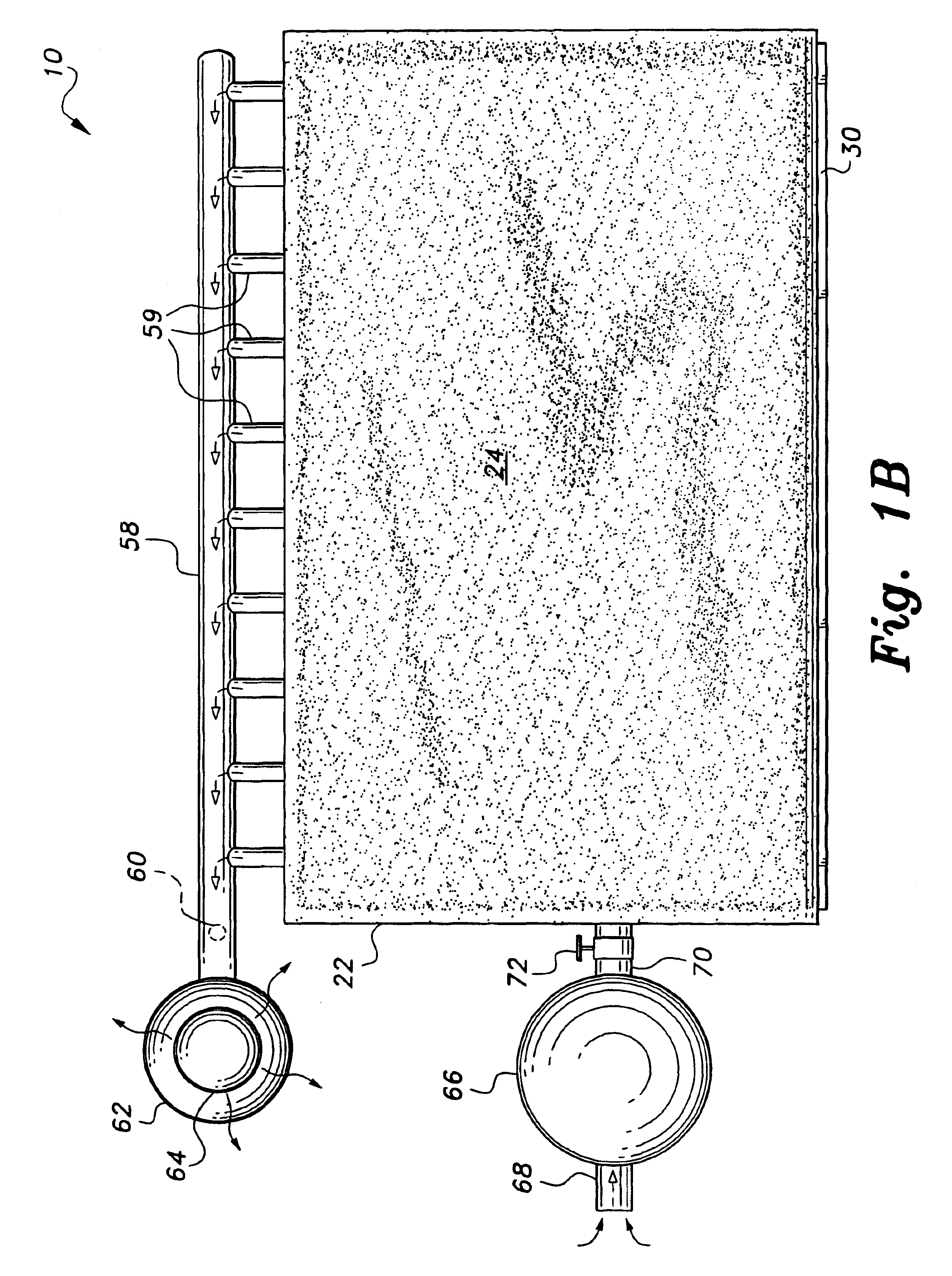Vacuum lumber drying kiln with collapsing cover and method of use
a vacuum chamber and kiln technology, which is applied in the direction of drying machines with progressive movements, lighting and heating apparatus, furnaces, etc., can solve the problems of occupying valuable kiln space, reducing operational efficiency in two ways, and prone to warpage and twisting in the kiln, so as to achieve flexible size and operation, low initial cost
- Summary
- Abstract
- Description
- Claims
- Application Information
AI Technical Summary
Benefits of technology
Problems solved by technology
Method used
Image
Examples
Embodiment Construction
The present invention is a wood drying kiln having a flexible cover allowing the stack of lumber, itself, to be employed to support the vacuum chamber using a flexible collapsing bag or cover alone or in combination with walls. The collapsing bag seals against a base, which may be heated or unheated to maintain the vacuum. In its simplest form a stainless steel platform or base is made to support a stack of lumber. The lumber stack has alternating layers of hot plates or stickers separating layers of lumber. A bag having an open bottom and made of nylon-reinforced rubber or other strong flexible material is placed over the wood and sealed to the stainless steel platform. A vacuum pump is connected with the bag by means of a manifold and operated to remove air from the enclosed lumber stack, the vacuum strengthening the seal between the base and the bottom of the bag.
Referring to FIGS. 1A-1I, there is shown one embodiment of the present invention wherein stickers are used to separate...
PUM
 Login to View More
Login to View More Abstract
Description
Claims
Application Information
 Login to View More
Login to View More - R&D
- Intellectual Property
- Life Sciences
- Materials
- Tech Scout
- Unparalleled Data Quality
- Higher Quality Content
- 60% Fewer Hallucinations
Browse by: Latest US Patents, China's latest patents, Technical Efficacy Thesaurus, Application Domain, Technology Topic, Popular Technical Reports.
© 2025 PatSnap. All rights reserved.Legal|Privacy policy|Modern Slavery Act Transparency Statement|Sitemap|About US| Contact US: help@patsnap.com



